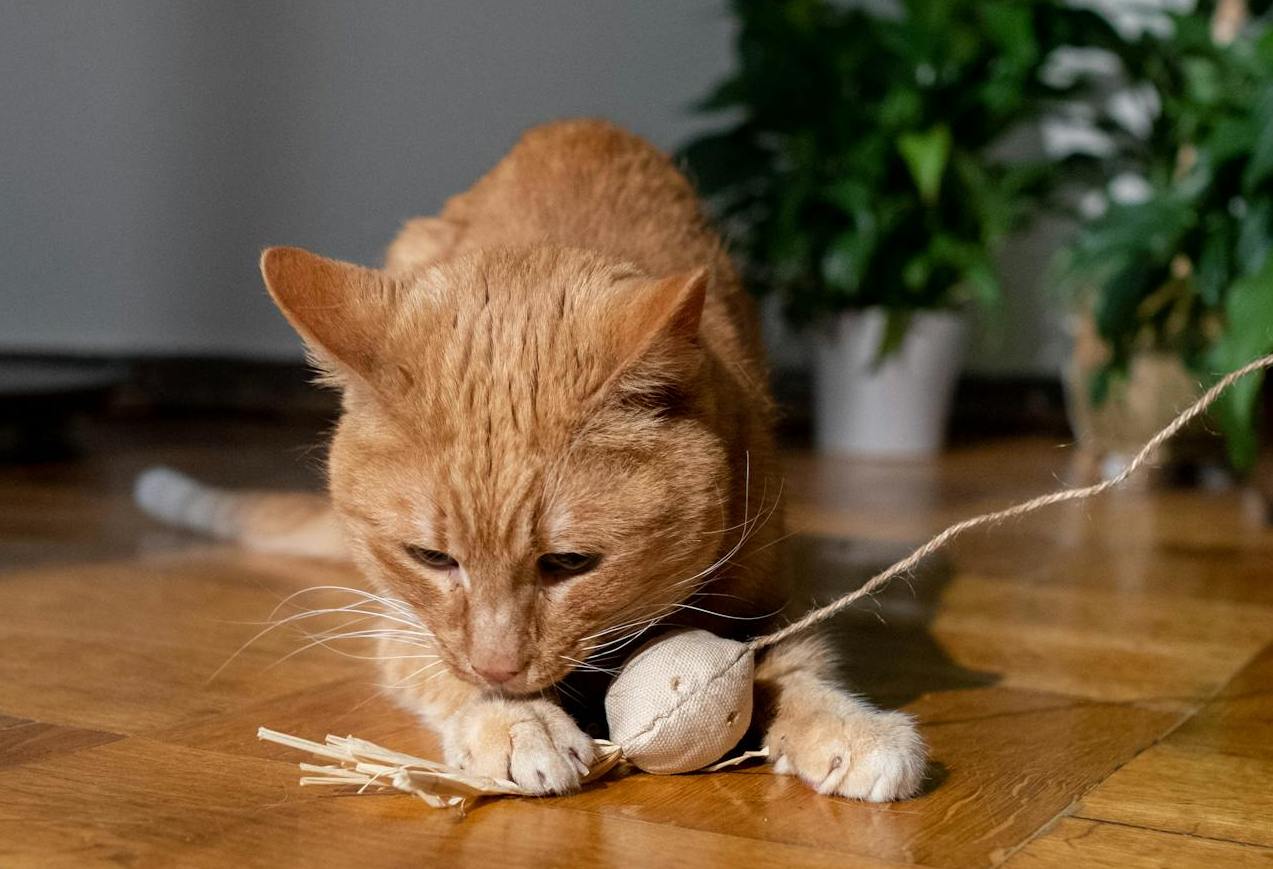Play can be a great opportunity to strengthen the bond between you and your cat. Play is also very important for the well-being of cats, especially ones that never go outside. Even adult cats should play.
However, many people don’t know how to play with cats in a way that is best for them.
Play for cats is like hunting and therefore it should activate a sequence of behaviours related to catching prey.
What does the hunting sequence in cats look like?
It consists of orienting, tracking, lurking, chasing, jumping, grabbing, killing/tearing, and eating. A good play should have as many elements from this sequence as possible.
For example, if you play with your cat with a toy on a string (e.g. a wand), it should not look like endless chasing of a toy. The toy must resemble a small animal and be possible to catch (therefore no laser light or just a string). The prey does not come close to the cat, it hides (behind a box or a pillow or under a blanket) and the cat observes it till he is ready to get it. Maybe there is a short chase but then a pounce and a bite. And now it’s time to tear the prey apart and consume it. Of course, we don’t want our cat to eat the toy, but to make the hunt (and play) successful we should drop a meaty snack next to the toy for the cat to consume it. We don’t have to give food every time the cat catches the toy, sometimes the real prey manages to escape, but we should do that regularly and always at the end of the play session.
Play should be a source of success, not frustration.
In general, it’s better to have multiple, short play sessions during the day than one long one.
There are other easy games we can play with our cat that satisfy his hunting instinct, for example:
Holding a long cardboard roll (e.g. from the wrapping paper) diagonally, resting on the floor and dropping kibble or other snacks that easily roll (one at a time) into it for the cat to catch when they fall out on the other end.
Also simply just throwing the kibble* on the floor for the cat to chase is much more fun and rewarding for him than eating it from a bowl.
And one important DON’T: don’t let your kitten play with your hands or feet as if it were prey. When cats are small it might be fun, but once they get older, their bites and scratches will be painful. If they are used to playing with you this way, it will be difficult to stop this behaviour. Old habits die hard.
Feel free to share any other ideas for an interactive play with cats in the comments below.
If you have questions concerning the cat’s play or other behaviour, feel free to contact me at Stressless Pets.
* Although kibble shouldn’t be (the main) part of your cats’ diet. Use meaty snacks for play instead.


You’ve really made things easy to understand, thanks!